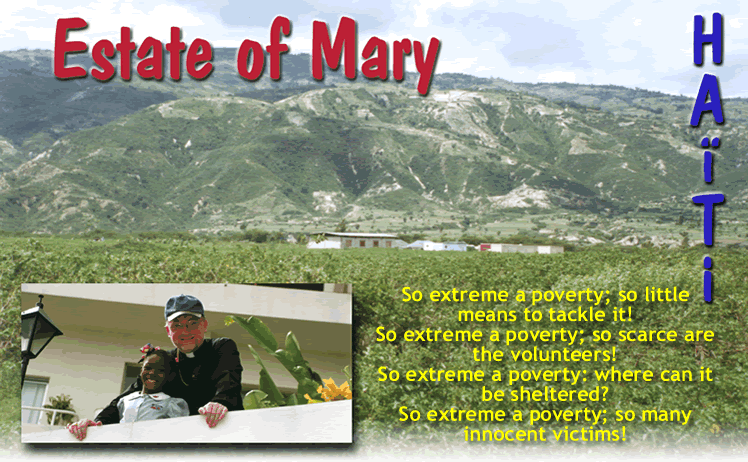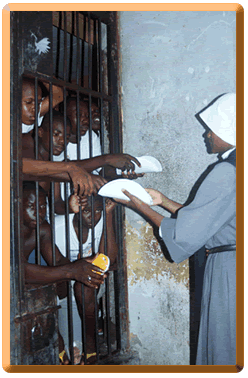
This region is devoid, so to speak, of any school and medical structures.
The Heavenly Protectress of the Mission, the Blessed Virgin Mary, has heard the supplications of her people suffering from malnutrition, lack of opportunities in education, extreme poverty, not benefiting from any alleviation to their corporal and spiritual miseries.
Very soon, obeying this urging appeal, Bishop Jean Marie sent some Nuns to take care of orphans and poor children, and despite a lack or so scarce availability of material means, the number of children increased more and more, while they had to move from place to place.
Already at that point, over a score of abandoned children had found a welcome place in the bosom of Fraternite Notre Dame, their new family where they were given both the affection and education they never had a chance to receive before. Most of them would certainly have died, without the succor from Fraternite Notre Dame.
In 1997, a patch of land, on which the actual mission of Fraternite Notre Dame now stands, was given us by a generous inhabitant of the Croix des Bouquets' Commune.
Thanks to Providence's good care, along the years, help was provided by different contingents of military and police men, coming with various initiatives from the United Nations, consulates, embassies, international organizations, benefactors from Haiti or overseas; in short, all these generous gifts from the heart transformed literally this desert place into a Haven of peace and a refuge for those who suffer.
Cut off from Port-au-Prince, the region suffers from isolation, partly because of the river, so unpredictable when it rains, and which cannot be crossed.

Visiting prisoners
